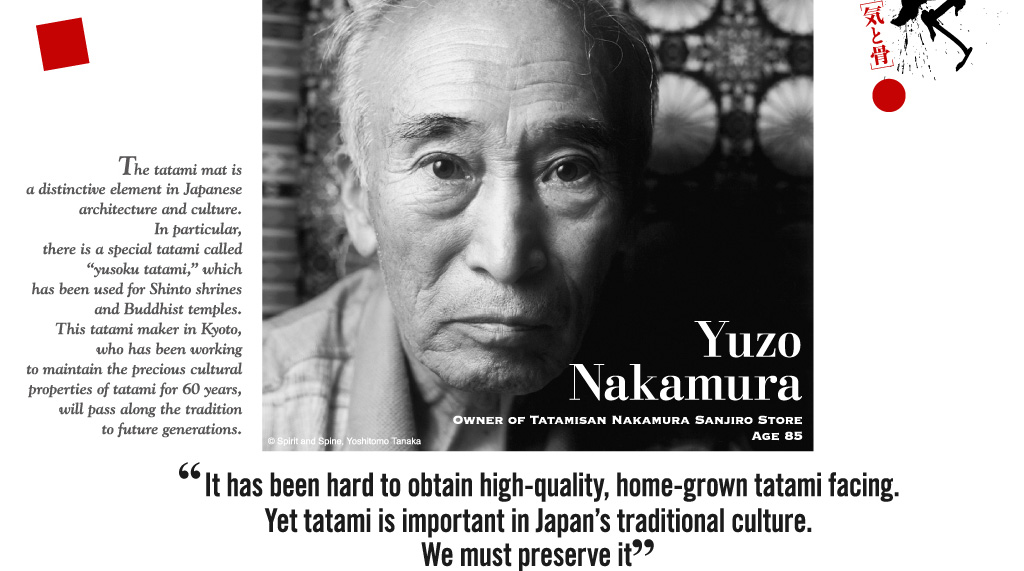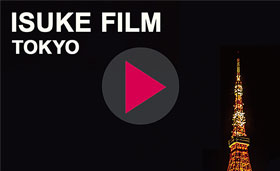

Yuzo Nakamura
Born in Kyoto in 1929. The fifth generation of a family in the tatami business since the Edo period. Worked at a munitions factory due to student mobilization during World War II. Even after the war, he was again mobilized as a conductor for the Japan National Railways. After graduating from Doshisha University, joined his family business. President of the Society for the Preservation of Tatami Cultural Property. Holder of the selected preservation techniques certification by the Japanese Agency for Cultural Affairs. He was awarded the Ojuhosho (Medal with a Yellow Ribbon for industriousness) following his father, and in 2011 awarded the Kyokujitusokosho (Order of the Rising Sun, Gold and Silver Rays).
Cooperation: To-ji Temple, Grand head temple of the Shingon sect.
This article originally appeared in “Shinsei” magazine, December 2012 issue, published by RINRI Institute of Ethics. Partially rewritten to update for this internet release.
The three generations of the Tatamisan. From left, Yuzo, Susumu, and Masayuki.





































































































